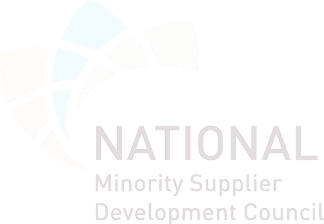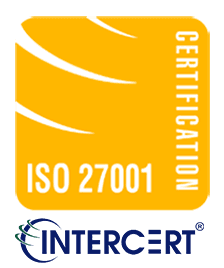The AHT Efficiency-Quality Dilemma
If you're managing a contact center, you've likely felt the pressure to keep Average Handle Time (AHT) low while still delivering exceptional customer experiences. It's the classic "do more with less" paradox, and frankly, it can feel impossible some days.
Sound familiar? You're not alone.
When I talked with contact center leaders last quarter, almost all admitted to occasionally sacrificing quality for speed. Yet the data tells us this approach backfires spectacularly.
Consider this: Customer Contact Week Digital (CCWD) found that contact centers obsessing over AHT without proper quality guardrails typically face:
27% higher repeat contact rates (translation: those "quick" calls? They're coming back to haunt you)
18% lower customer satisfaction scores (ouch!)
34% higher agent attrition rates (there goes your experienced talent)
42% increase in escalations (so much for saving time)
Here's the question we should be asking: What if you could reduce handle times and improve quality simultaneously? Not just marginally, but significantly?
Let's explore how the right QMS approach makes this possible.
5 Evidence-Based QMS Strategies for Balanced AHT Reduction
1. Process Intelligence and Customer Journey Analytics: Find the Real Time-Wasters
Remember the last time you shadowed an agent? You probably noticed they weren't wasting time chatting—they were waiting for systems, searching for information, or navigating complex procedures.
McKinsey confirms this observation: 62% of handle time in complex interactions goes to battling system constraints, not addressing customer needs. That's nearly two-thirds of your AHT that has nothing to do with agent efficiency!
Quick self-assessment: Ask yourself - do you know exactly where your agents' time goes during interactions? If not, you're likely optimizing the wrong things.
Smart QMS platforms use process intelligence to:
Map the real customer journey across channels, identifying unnecessary steps
Analyze interaction patterns to find the fastest resolution paths that actually work
Identify automation opportunities that reduce effort without sacrificing quality
Quantify the impact of process changes on both AHT and quality metrics
Organizations using these approaches cut AHT by 22% while improving satisfaction by 14%, according to Gartner's latest research. That's the power of fixing root causes rather than pushing agents to hurry.
2. Advanced Knowledge Orchestration: Put Answers at Agents' Fingertips
"I'll just put you on a brief hold while I check that for you."
How many times per day do your customers hear this? According to Forrester, agents spend 27% of handle time searching for information across disconnected systems.
Think about it: more than a quarter of your AHT isn't spent helping customers—it's spent hunting for information that should be readily available.
Try this experiment: Time how long it takes your agents to find answers to these five common customer questions. The results might shock you.
Modern knowledge orchestration solutions transform this experience by:
Delivering relevant information automatically based on the conversation context
Enabling instant response insertion for accurate, consistent answers
Using natural language processing to interpret questions and suggest solutions
Continuously improving as the system learns from successful resolutions
When you eliminate the "swivel chair" experience, handle times naturally decrease. Organizations using these systems report 37% faster resolution on complex inquiries while simultaneously improving accuracy by 28%.
3. AI-Powered Conversation Intelligence: Real-Time Coaching When It Matters
Imagine having your best supervisor invisibly guiding every agent interaction, providing just-in-time assistance without interruption. That's the power of conversation intelligence with real-time guidance.
Contact centers implementing these solutions experience remarkable results:
32% reduction in average handle times
27% improvement in first contact resolution
24% higher quality assurance scores
19% increase in customer satisfaction ratings
Question for you: What would these improvements mean for your annual operating budget?
These AI-driven QMS platforms analyze conversations as they happen to:
Recognize when an agent is stuck and provide immediate assistance
Suggest next steps based on patterns from thousands of successful interactions
Flag potential compliance issues before they become problems
Detect customer frustration and provide real-time de-escalation guidance
It's like upgrading every agent's capabilities instantly—without months of additional training.
4. Intelligent Work Distribution: Match the Right Agent to Every Customer
We've all seen it happen: A complex technical issue gets routed to a new agent, while a simple password reset goes to your most experienced technical specialist. Neither situation is ideal for AHT or quality.
COPC Inc. research confirms that optimizing case routing based on agent proficiency reduces AHT by 16-24% while improving quality scores. It's not about making everyone faster—it's about making smarter matches.
Quick reflection: How sophisticated is your current routing strategy? Are you still using basic queue-based approaches?
Today's QMS platforms provide intelligent routing that:
Uses predictive analytics to match case complexity with specific agent skills
Continuously updates agent proficiency scores based on recent performance
Adjusts workforce distribution in real-time as volume and complexity fluctuate
Automatically classifies cases to streamline handling from the start
The result? Interactions are handled by the people best equipped to resolve them quickly and effectively.
5. Unified Quality and Performance Management: Align What You Measure with What Matters
If you're still measuring quality in one department and efficiency in another, you're inadvertently creating conflict. Harvard Business Review found that organizations with integrated quality and performance frameworks were 3.4 times more likely to improve both metrics simultaneously.
Ask yourself: Do your agents know how to balance speed and quality in their daily work, or do they feel pulled in opposite directions?
Modern QMS solutions solve this through:
Balanced scorecards that give equal weight to efficiency and quality
100% interaction monitoring that eliminates sampling bias
Personalized coaching recommendations based on individual performance patterns
Recognition programs that celebrate balanced achievement
When agents understand that both metrics matter—and are measured holistically—they make better moment-by-moment decisions during customer interactions.
Your 90-Day QMS Transformation Roadmap
Ready to transform your contact center performance? Here's how successful organizations approach the journey:
Phase 1: Discovery and Baseline Assessment (Weeks 1-2)
This is where you'll uncover the truth about your current operation. Analyze interactions across channels, map processes, establish baseline metrics, and—crucially—talk to your agents about what's really happening on the front lines.
Phase 2: Quick-Win Implementation (Weeks 3-6)
Build momentum with improvements that deliver immediate results: optimize your knowledge base, eliminate redundant steps, standardize after-call work, and make initial desktop improvements. These changes alone can reduce AHT by 10-15%.
Phase 3: Technology Integration and Deployment (Weeks 7-10)
Now it's time to implement the game-changers: real-time guidance for high-volume scenarios, automation for routine processes, comprehensive quality monitoring, and performance dashboards that give everyone visibility into what matters.
Phase 4: Optimization and Cultural Integration (Weeks 11-12)
Fine-tune your new tools based on initial data, roll out personalized coaching programs, launch your updated performance framework, and recognize early adopters who exemplify the balanced approach.
Pro tip: Don't skip the celebration at the end of each phase. Recognizing progress keeps the team motivated for the journey.
Real Stories, Real Results: QMS Transformation in Action
Financial Services: "From Frustration to Resolution"
A major credit card provider was struggling with dispute resolution calls averaging 9.2 minutes—with customer satisfaction in free fall.
After implementing conversation intelligence with guided resolution paths, they experienced:
31% AHT reduction (down to 6.3 minutes)
18% increase in first-contact resolution
22% improvement in CSAT scores
Their contact center director told us: "For the first time, we're not sacrificing quality for speed. We're actually delivering better experiences in less time."
Healthcare: "Eliminating the Hold Music"
A health insurance company found that policy verification was creating extended hold times, frustrating both customers and agents.
Their solution? Knowledge orchestration with integrated policy lookup capabilities.
The results were transformative:
42% reduction in hold time
27% overall AHT improvement
12% increase in accuracy
"Our agents used to dread complex policy questions," their operations manager shared. "Now they have the answers before customers finish asking the questions."
Telecommunications: "Breaking the Callback Cycle"
A telecom provider was trapped in an endless loop of technical support callbacks, with customers increasingly frustrated by repetitive troubleshooting.
By implementing process intelligence and guided diagnostic workflows, they achieved:
19% AHT reduction
34% decrease in repeat contacts
23% improvement in Net Promoter Score
"We're now solving the right problems the first time," their CX director explained. "That's better for customers and dramatically more efficient for us."
The Omind AI QMS Advantage: Where Science Meets Service
If you've stayed with me this far, you're serious about transforming your contact center performance. You understand that the efficiency-quality trade-off is a false choice—with the right approach, you can excel at both.
This is precisely why Omind AI QMS was developed. Unlike traditional QMS platforms that address only fragments of the performance puzzle, Omind AI delivers an integrated solution that combines:

AI-powered process intelligence that continuously uncovers optimization opportunities
Context-aware knowledge orchestration that puts critical information at agents' fingertips
Real-time conversation guidance that improves both speed and accuracy
Predictive routing capabilities that match customer needs with agent expertise
Integrated performance management that aligns all metrics toward customer success
Organizations implementing Omind AI QMS report average AHT reductions of 24-38% within 90 days while improving customer satisfaction scores by 17-29%. The platform eliminates the need for multiple point solutions, reducing your technology footprint while providing comprehensive insights across the entire customer journey.
What would your contact center look like with:
Average handle times reduced by over 30%?
First-contact resolution improved by 25%?
Customer satisfaction scores up by 20%?
Agent turnover reduced by 15%?
These aren't hypothetical benefits—they're the documented results from Omind AI QMS implementations.
Ready to Transform Your Contact Center Performance?
The balancing act between efficiency and quality doesn't need to be a daily struggle. With the right QMS approach, both metrics improve naturally as barriers are removed and agents are empowered with the right tools and insights.
Take the first step: Request a personalized demonstration and ROI analysis of Omind AI QMS today. See exactly how much time and money you could save while delivering experiences that turn customers into advocates.
AUTHOR
Team Omind
Empowering Businesses with Unified Customer Experience Platform, Leveraging Advanced AI and Intelligent Automation.
PRODUCT
QMS
Share LINK
Related Blogs




